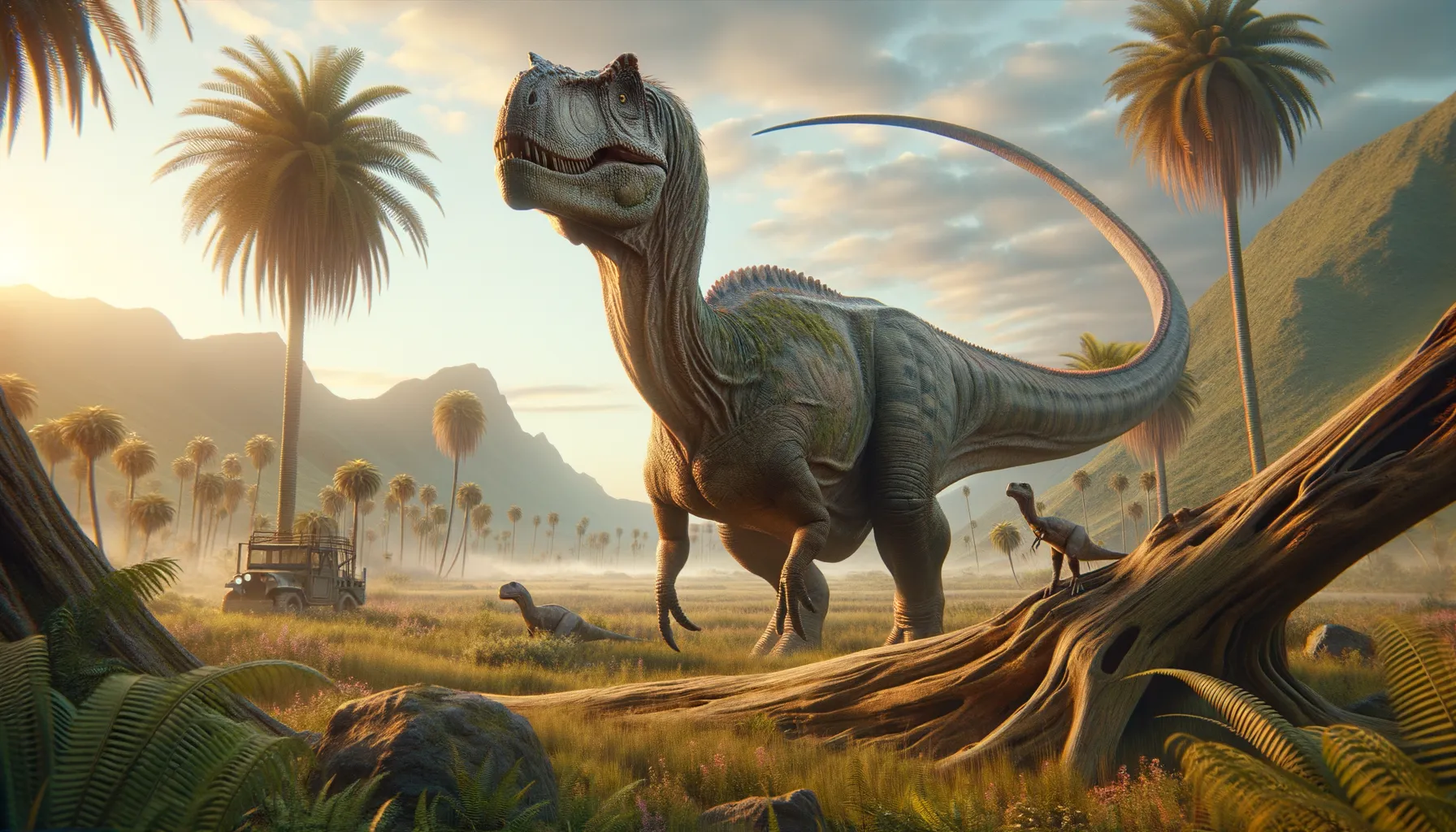
Haplocanthosaurus
Jurassic giant with a shorter neck.
Period
Jurassic
Length
Around 21 to 24 meters long.
Height
Up to about 9 meters tall.
Weight
Estimated to weigh around 14,000 kg.
The Haplocanthosaurus was a giant sauropod dinosaur that roamed during the late Jurassic period. It is known for its relatively shorter neck compared to other sauropods, and it walked on four sturdy legs. Fossils of this dinosaur have been critical in understanding sauropod evolution and diversity. It was a plant-eater and existed in what is now North America.
Diet
The Haplocanthosaurus was herbivorous, primarily feeding on plants. It likely stripped leaves from trees and shrubs with its teeth.
Hunting
Being an herbivore, it did not hunt but spent much of its time foraging for vegetation. Its long neck helped it reach higher plants.
Environmental challenges
During its time, Haplocanthosaurus faced challenges such as climate variations and competition for food with other herbivores. It lived in a landscape that could change from lush forests to dry areas, affecting plant availability. Predatory threats from large carnivorous dinosaurs were also part of its natural hazards.
Speed
It was a slow-moving dinosaur.
Lifespan
Lived for several decades.
First discovery
Discovered in Colorado in 1901.
Fun Facts
- Haplocanthosaurus was a relatively small sauropod dinosaur, reaching about 49 feet in length.
- It lived during the Late Jurassic period, approximately 155 to 152 million years ago.
- Unlike some other sauropods, Haplocanthosaurus had a relatively short neck.
- Fossils of Haplocanthosaurus have been found primarily in Colorado, USA.
- Its name means 'simple spined lizard,' referring to its vertebrae structure.
- Haplocanthosaurus is one of the rarest sauropods with only a few fossils discovered.
- It likely lived in a variety of environments, from forests to floodplains.
Growth and Development
Haplocanthosaurus, like other sauropods, hatched from eggs and grew rapidly to attain its massive size. The growth patterns suggest they reached maturity relatively quickly, which helped them avoid predators. The development phases were crucial for survival in their challenging environment.
Habitat
This dinosaur lived in floodplains and forested environments. The area provided ample vegetation for feeding. The habitat saw seasonal changes, suggesting that Haplocanthosaurus had adaptations for various climates.
Interaction with other species
Haplocanthosaurus likely coexisted with both other herbivores and large carnivorous dinosaurs. Its size offered some degree of protection from predators. It may have interacted with others when feeding in the same areas, maintaining a cautious distance from dangerous species.
Natural lifespan
Their natural lifespan stretched over many decades.
Reproduction
Haplocanthosaurus, like other dinosaurs, reproduced by laying eggs. The nesting behavior is not well-documented, but it likely laid eggs in secure environments to protect them from predators. Juveniles were independent shortly after hatching.
Social behaviour
Evidence on its social behavior is limited. Some sauropods are thought to have moved in herds, suggesting that Haplocanthosaurus might have had some level of social interaction, especially during migration or foraging.
Fossil locations
The primary fossils of Haplocanthosaurus have been found in Colorado and Wyoming. These discoveries are mostly from the Morrison Formation, a site rich in Jurassic dinosaur remains.
